Physical Address
304 North Cardinal St.
Dorchester Center, MA 02124
Physical Address
304 North Cardinal St.
Dorchester Center, MA 02124
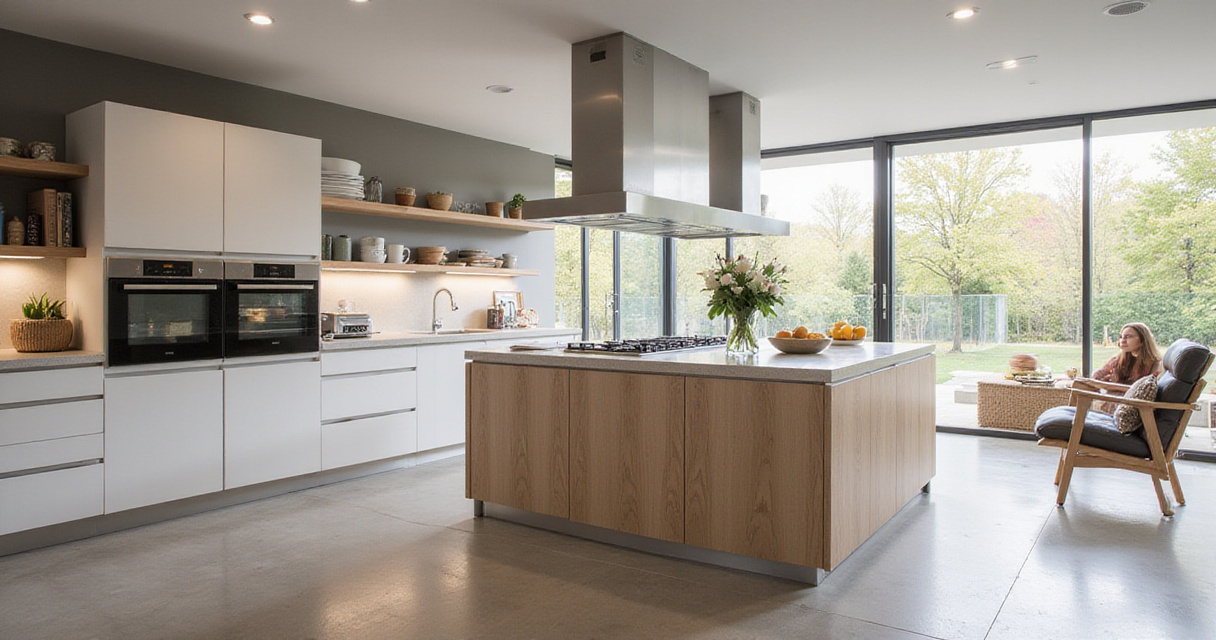
Transform your space with 21 expert kitchen remodel design tips covering layout, materials, storage, and smart planning for lasting beauty and functionality.
Creating the perfect kitchen requires more than just selecting beautiful finishes—it demands a thoughtful approach that balances aesthetics with functionality. When morning light filters through your windows, casting gentle shadows across carefully chosen surfaces, you want every element to work in harmony. From the satisfying click of soft-close drawers to the seamless flow between prep zones, a well-designed kitchen becomes the backdrop for countless daily rituals and cherished memories.
The journey toward your dream kitchen begins with understanding that successful design isn’t about following trends—it’s about creating a space that responds to how you actually live. Whether you’re brewing morning coffee in peaceful solitude or orchestrating a holiday feast for extended family, your kitchen should anticipate your needs and support your lifestyle. The difference between a good kitchen and an extraordinary one lies in the details: the strategic placement of outlets, the thoughtful integration of storage solutions, and the careful consideration of how natural light changes throughout the day.
These 21 expert insights will guide you through every crucial decision in your kitchen remodel design, from the foundational planning stages to the finishing touches that make the space uniquely yours. Each tip builds upon the others, creating a comprehensive roadmap that ensures your investment delivers both immediate satisfaction and lasting value.
Before falling in love with cabinet styles or countertop samples, successful kitchen remodel design begins with honest self-assessment. Spend a week observing how your household actually uses the current space. Notice where bottlenecks occur during busy mornings, where people naturally gather, and which tasks create the most frustration. Document everything from homework sessions at the counter to the chaotic dance of multiple cooks preparing holiday meals.
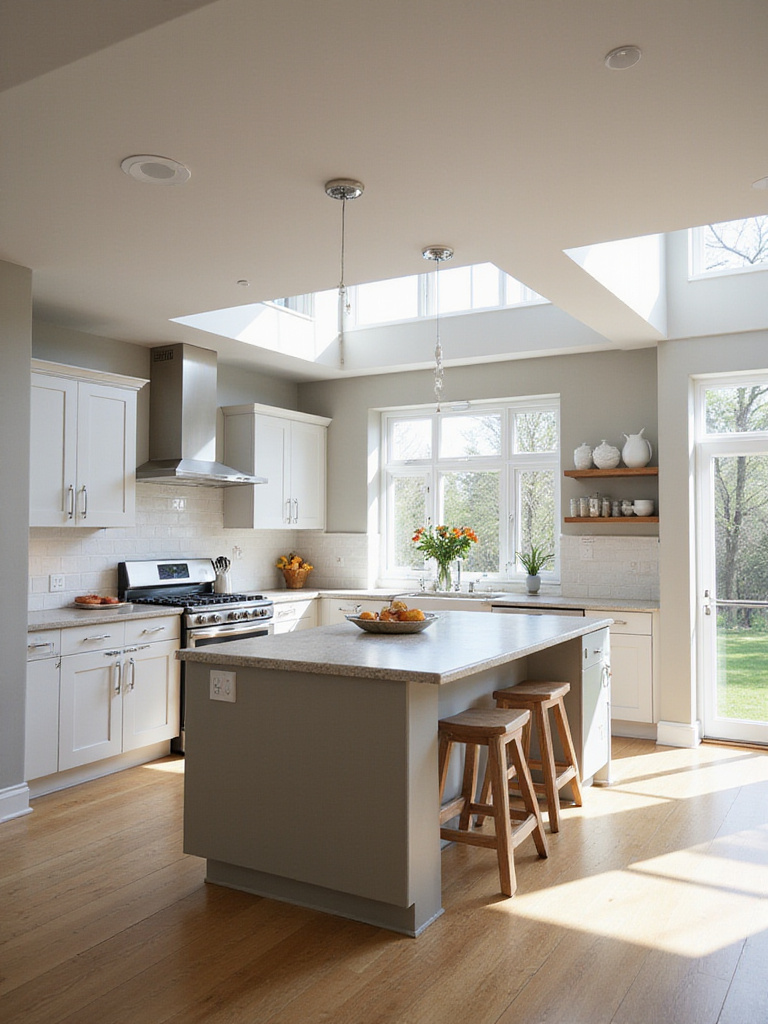
Create a prioritized list that distinguishes between must-have functionality and nice-to-have features. Interview everyone who regularly uses the kitchen—their pain points might differ significantly from yours. A teenager might struggle with accessible snack storage, while a partner might need better lighting for detailed prep work. This discovery phase prevents costly mid-project changes and ensures your design serves real needs rather than Pinterest fantasies.
The most successful kitchen remodel design projects start with clients who understand exactly why they’re renovating and how the space needs to perform for their specific lifestyle.
Financial clarity forms the foundation of every successful kitchen remodel design decision. Research typical costs in your area using multiple sources: online estimators, local contractor websites, and recent projects by neighbors. This research phase often reveals that initial budget assumptions need significant adjustment—better to discover this during planning than mid-construction.
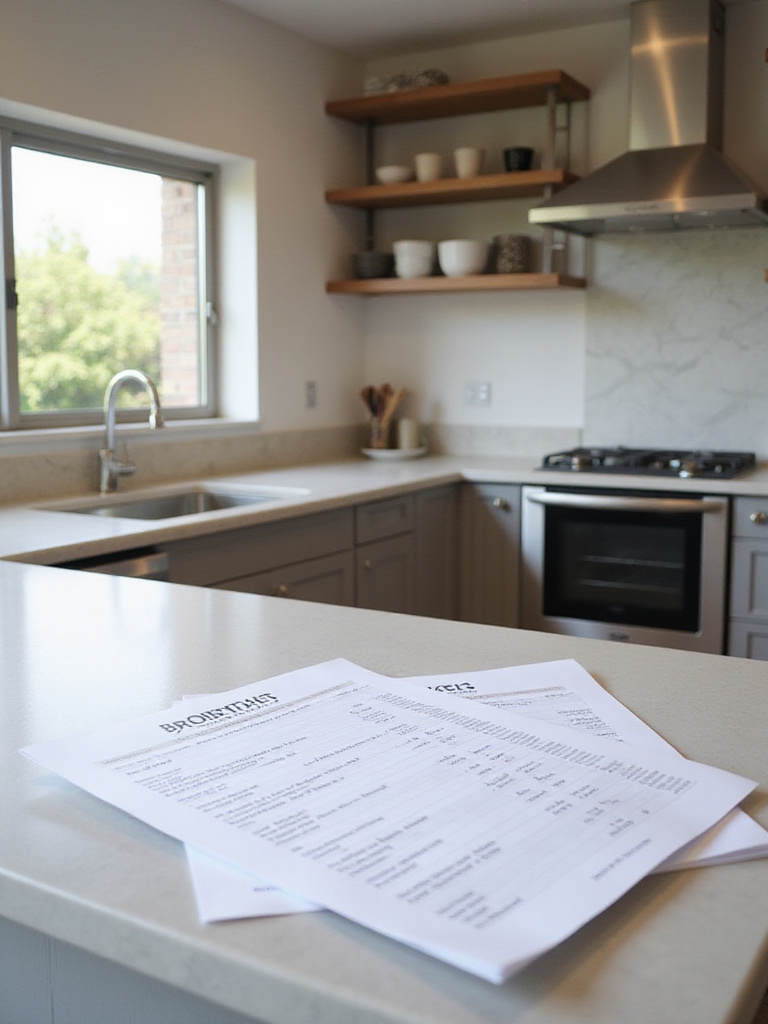
Assess your true financial capacity by examining available savings, exploring financing options like home equity lines of credit, and determining a comfortable spending limit that won’t strain your finances. Create a detailed breakdown allocating percentages to major categories:
Professional designers consistently report that projects with well-defined budgets from the start experience fewer delays, less stress, and higher client satisfaction than those where financial parameters remain unclear.
Transform your kitchen from a collection of appliances into a choreographed workspace by understanding the four primary zones: Storage (refrigerator, pantry), Preparation (main sink, counter space), Cooking (range, oven), and Cleanup (sink, dishwasher). Walk through preparing a typical meal, noting every step from retrieving ingredients to final cleanup. Identify where you backtrack unnecessarily or where tasks create conflicts.
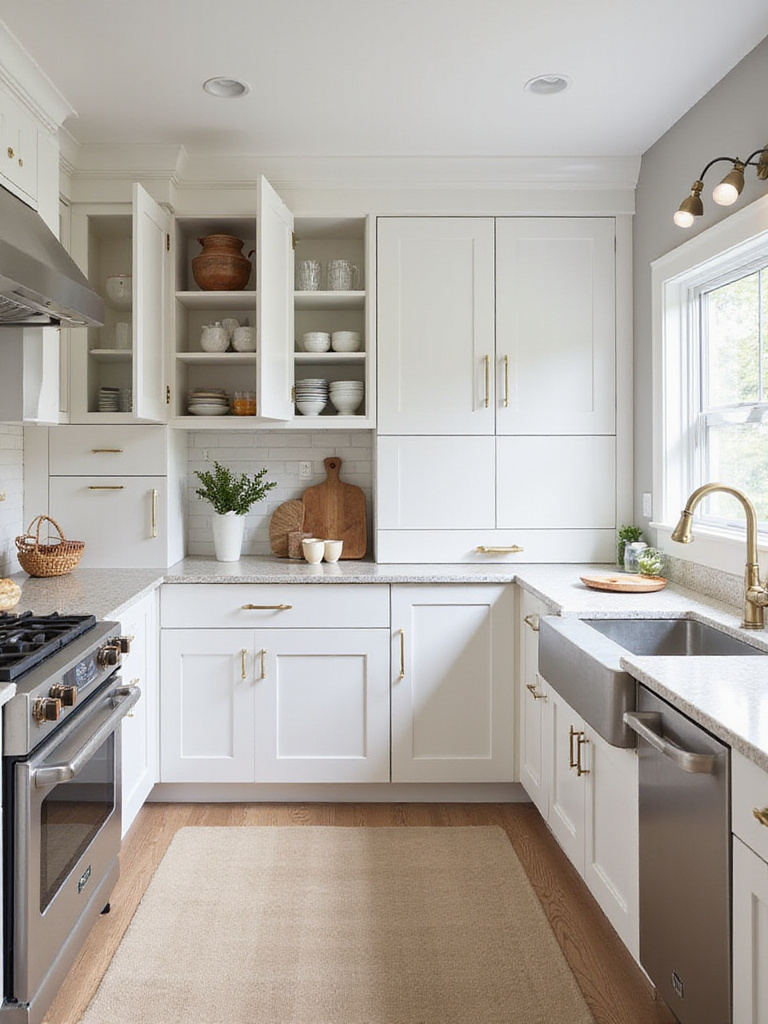
Optimize zone relationships by positioning the Preparation area between Storage and Cooking zones, creating a logical flow of ingredients from refrigerator to prep space to cooking surface. Ensure the Cleanup zone has adequate space near cooking areas without interfering with active prep work. Consider how multiple cooks might use the space simultaneously—modern families often need zones that can function independently.
Beyond the obvious placement, consider using this zone concept to identify opportunities for specialized storage within each area, such as knife blocks near prep sinks or pot storage adjacent to the range.
While modern kitchen remodel design embraces broader workflow concepts, the classic work triangle between refrigerator, main sink, and primary cooking surface remains fundamental for efficiency. Measure the distances between these three points, ensuring each leg falls between 4 and 9 feet, with a total perimeter of 12-26 feet. This creates a compact workspace without crowding.
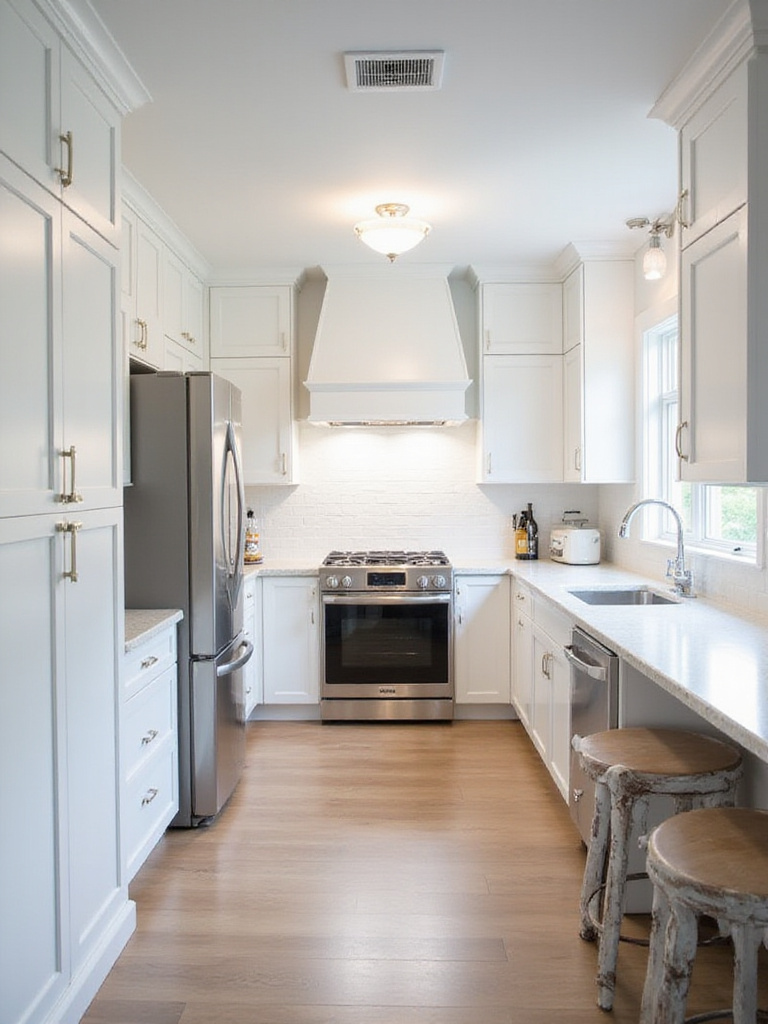
Ensure no major obstacles like islands or tall cabinets interrupt the triangle’s legs by more than 12 inches. The sink often serves as the triangle’s hub, positioned strategically between cold storage and cooking heat. In larger kitchens, consider creating secondary triangles—perhaps a prep sink near the refrigerator forming a tighter triangle focused on food preparation tasks.
The composition comes together when you balance the classic triangle with modern zone concepts, creating a kitchen that flows efficiently whether you’re cooking alone or coordinating with family members.
Major appliances define your kitchen’s functionality and visual flow, making their placement the first critical decision in kitchen remodel design. Begin by confirming exact dimensions, door swing clearances, and utility requirements for each appliance before designing surrounding cabinetry. A refrigerator that’s two inches wider than anticipated can derail an entire cabinet layout.
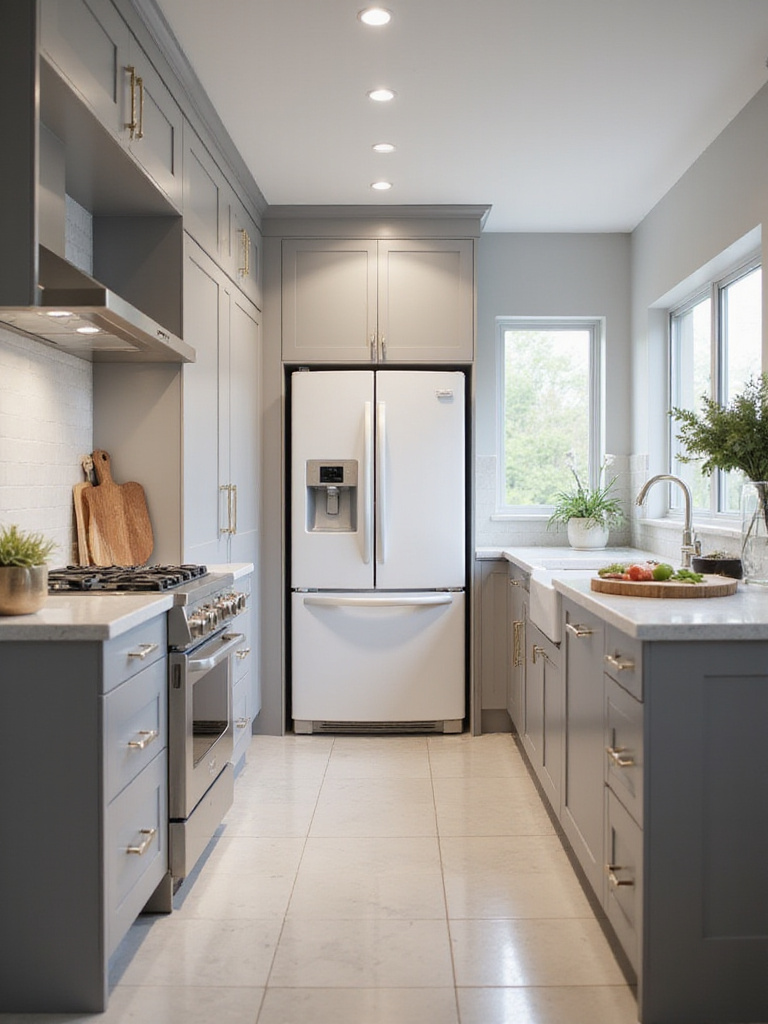
Consider the relationship between appliances and daily tasks. Position the dishwasher within easy reach of dish storage but not so close to the sink that both can’t be used simultaneously. Plan for adequate landing space—at least 15 inches of counter space on the handle side of the refrigerator, and 12 inches on either side of the cooktop for safe food transfer.
What makes this choice better for our planet is selecting energy-efficient models and considering built-in or panel-ready options during the design phase, which create seamless integration with cabinetry for a custom, high-end appearance.
Cabinets represent the largest visual element and storage opportunity in your kitchen, demanding careful balance between style preferences and functional requirements. Conduct a thorough inventory of everything you need to store, from small appliances to specialty cookware, identifying current storage frustrations and accessibility issues.
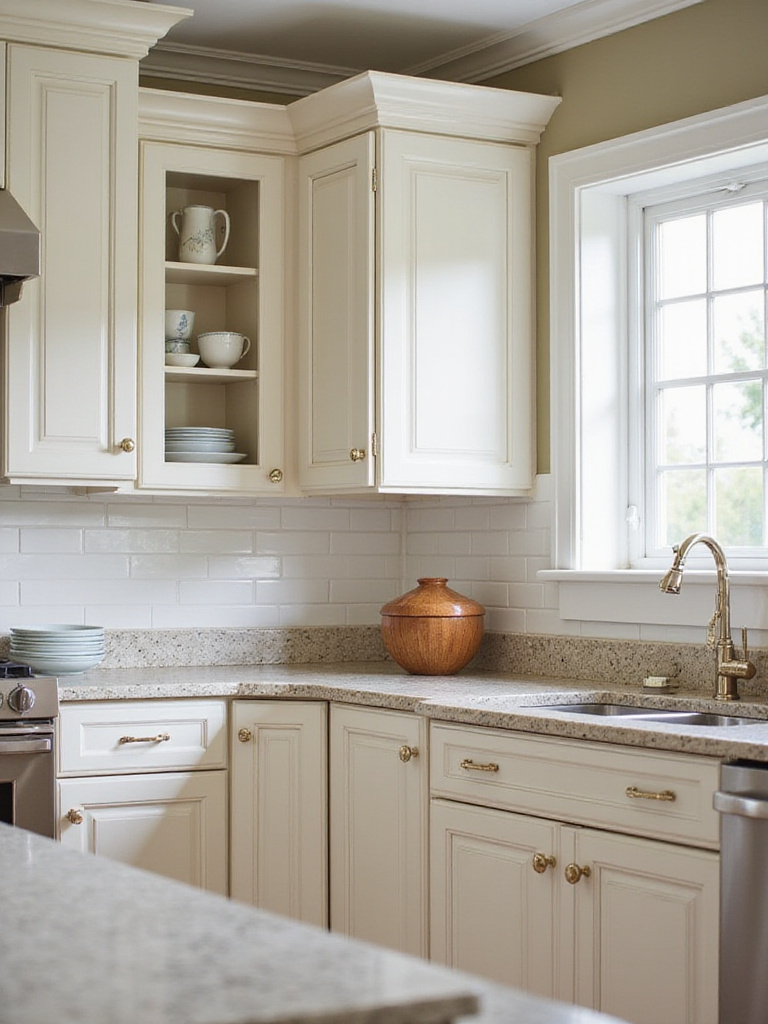
Research cabinet construction quality, comparing solid wood, plywood, and engineered materials for durability and longevity. Plan interior storage solutions during the design phase:
The investment value comes from the exceptional construction quality and thoughtful interior organization that transforms daily kitchen tasks from frustrating searches into efficient, pleasant experiences.
Countertops endure constant use, making material selection crucial for both performance and aesthetics in kitchen remodel design. Assess your cooking habits honestly—do you frequently place hot pans directly on surfaces? Are you meticulous about using cutting boards, or do you sometimes chop directly on counters? Understanding your real-world usage patterns guides material selection more effectively than aspirational ideals.
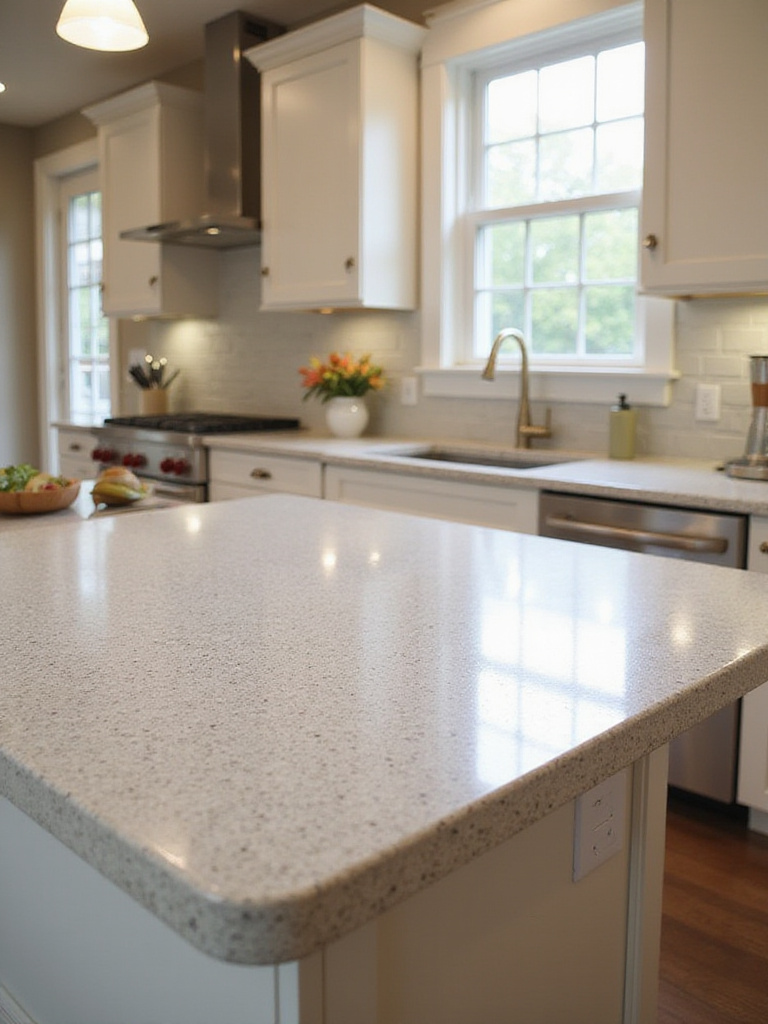
Compare materials based on practical properties: quartz offers consistency and low maintenance, granite provides natural beauty with periodic sealing requirements, and butcher block creates warmth but needs regular care. Visit showrooms to examine full slabs, especially for natural stone, as small samples can’t convey the full pattern and color variation you’ll live with daily.
The unexpected environmental benefit comes from choosing locally sourced materials when possible, and selecting durable options that won’t require replacement for decades, reducing long-term environmental impact.
Kitchen floors face daily challenges from spills, dropped objects, and heavy foot traffic, requiring materials that prioritize safety without sacrificing aesthetics. Evaluate slip resistance ratings, particularly important near sinks and dishwashers where water exposure is common. Look for DCOF (Dynamic Coefficient of Friction) ratings of 0.42 or higher for optimal safety.
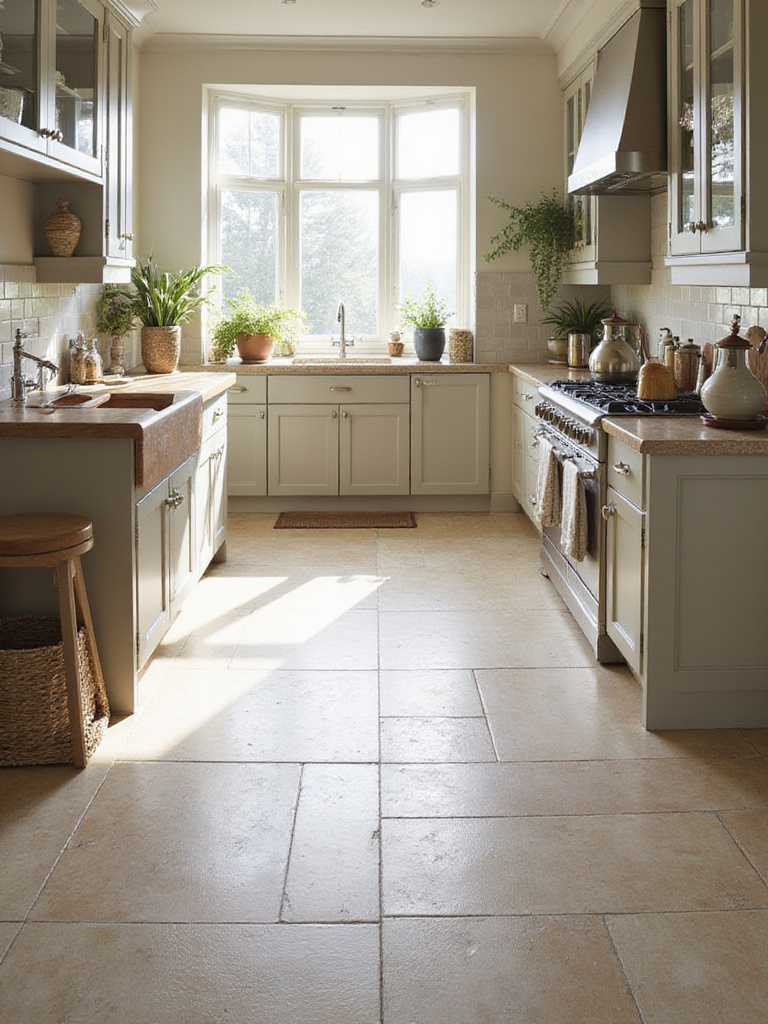
Consider maintenance requirements realistically—while natural stone offers beauty, it may require more care than busy families can consistently provide. Luxury vinyl plank (LVP) and Porcelain Tile consistently rank as top choices for their water resistance, durability, and style variety. Test samples in your specific lighting conditions, as kitchen lighting can dramatically affect how colors and patterns appear throughout the day.
The mood shifts dramatically when you add flooring that complements your cabinet and countertop selections while providing the safety and durability your household requires.
Effective lighting transforms a kitchen from merely functional to truly inviting, requiring strategic layering of different light types. Plan ambient lighting for general illumination, task lighting for specific work areas, and accent lighting to highlight architectural features or create atmosphere. Each layer should be controllable independently, allowing you to adjust the kitchen’s mood for different activities.
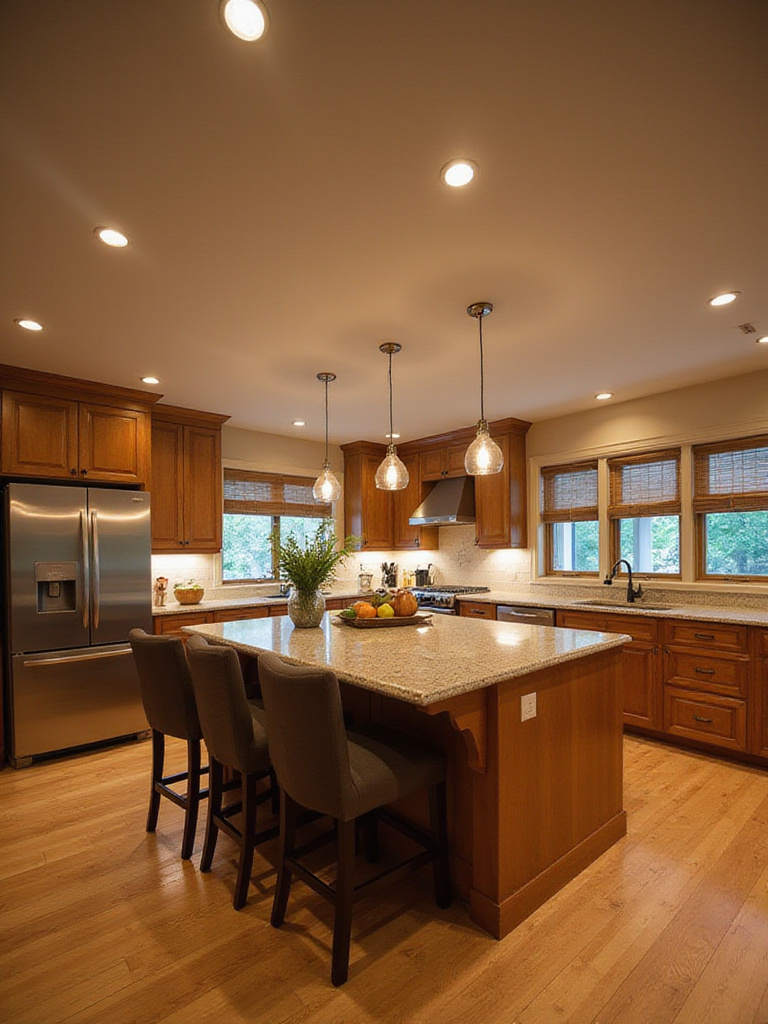
Install under-cabinet LED strips to eliminate shadows on work surfaces, pendant lights over islands for both task and visual appeal, and recessed cans for general ambient light. Consider color temperature consistency—warmer lights (2700K-3000K) create cozy atmospheres, while cooler lights (3500K-4000K) enhance task visibility.
The visual weight balances perfectly when you incorporate dimmer controls for each lighting layer, enabling seamless transitions from bright morning prep work to intimate evening dining.
Transform every cabinet into highly functional storage by integrating pull-out shelves, drawers, and specialized organizers during your kitchen remodel design. Standard cabinets with fixed shelves waste significant space in back corners and deep recesses. Pull-out solutions bring everything forward for easy access and visual inventory.
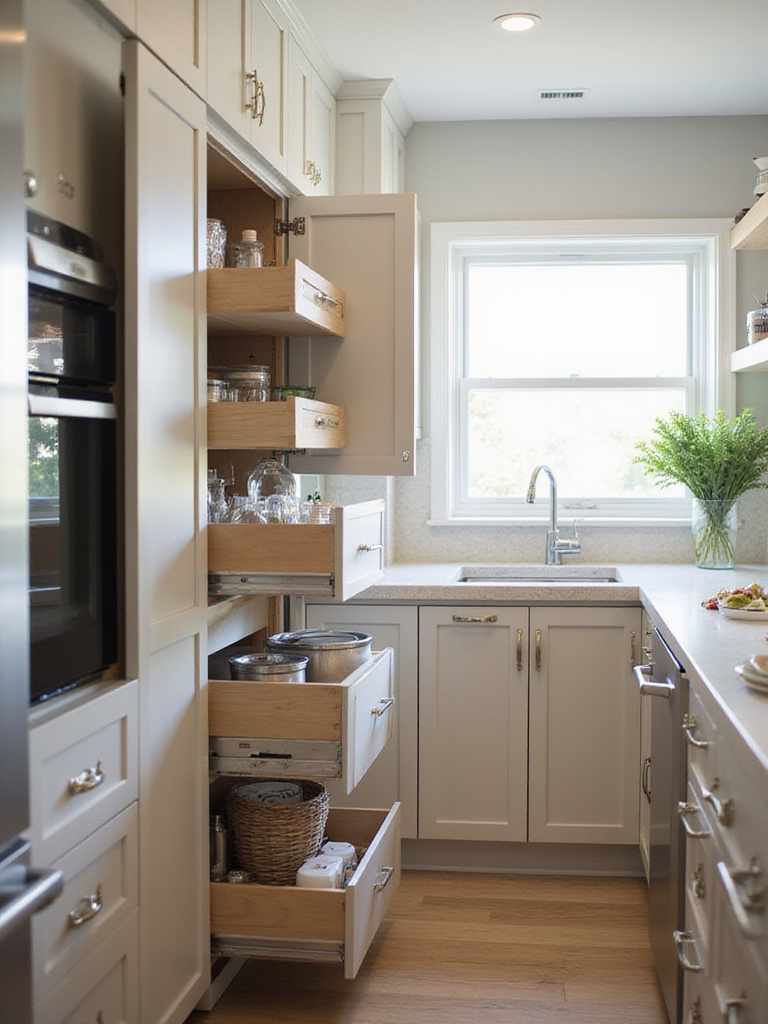
Focus on high-impact areas where pull-outs provide the greatest benefit:
Quality hardware with full-extension, soft-close mechanisms ensures smooth operation and prevents damage from slamming. The investment in superior storage systems pays dividends daily through improved organization and reduced frustration.
Layer in dimension by simply adding pull-out waste and recycling bins, keeping unsightly containers hidden while maintaining easy access for daily use.
The backsplash serves dual purposes in kitchen remodel design: protecting walls from moisture and splashes while providing opportunities for color, texture, and personality. Prioritize protection in high-exposure areas behind sinks and ranges, where durability and easy cleaning are essential. Consider extending coverage beyond minimum requirements for greater visual impact and protection.
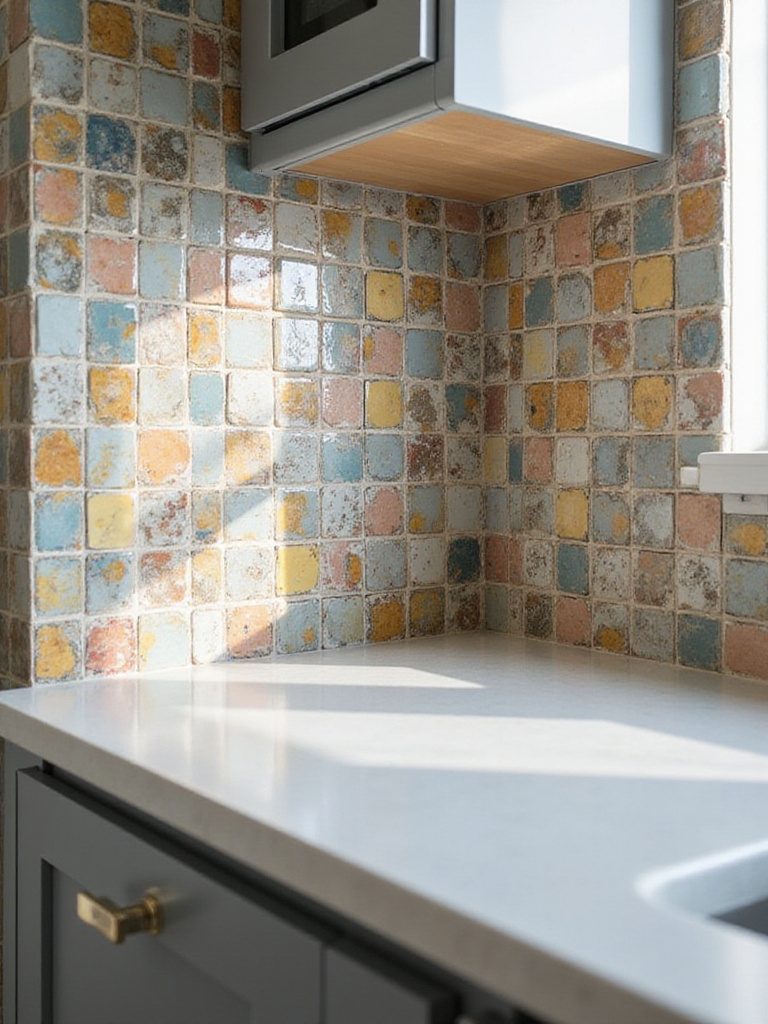
Material selection should balance aesthetics with practicality. Ceramic and porcelain tiles offer versatility and durability, while natural stone provides unique character but may require sealing. Glass tiles reflect light beautifully but show water spots more readily. Consider the maintenance commitment each material requires given your household’s cleaning routines.
The finishing touch that elevates the entire look often comes from thoughtful grout selection—Contrasting Grout can emphasize tile patterns, while matching grout creates a more seamless appearance.
Cabinet Hardware functions as jewelry for your kitchen, providing the tactile connection between users and storage while significantly impacting the overall aesthetic. Select finishes that coordinate with appliances, lighting fixtures, and plumbing fixtures for visual cohesion. Consider mixing hardware types—knobs for doors and pulls for drawers—which often provides both visual interest and improved functionality.
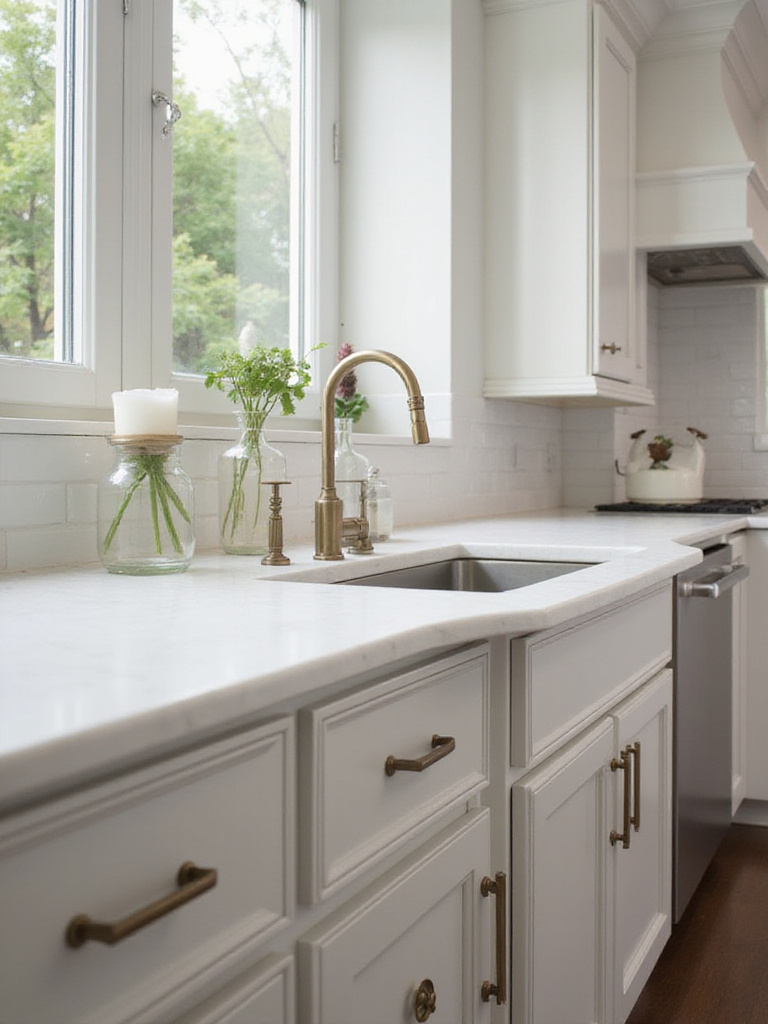
Size hardware proportionally to cabinet doors and drawers. Larger drawers can accommodate longer pulls, while smaller doors work well with appropriately sized knobs. Test samples on your actual cabinets when possible, as lighting and cabinet color can dramatically affect how hardware appears.
The unexpected pairing that always works is mixing warm and cool tones thoughtfully—brass hardware can warm up cool gray cabinets, while brushed nickel can provide sophisticated contrast against warm wood tones.
Proper ventilation protects your kitchen remodel design investment by removing grease, moisture, and odors that can damage surfaces and degrade air quality. Calculate required CFM (cubic feet per minute) based on your cooktop’s BTU output—gas ranges typically need higher ventilation capacity than electric. Prioritize ducted systems over recirculating models for superior performance.
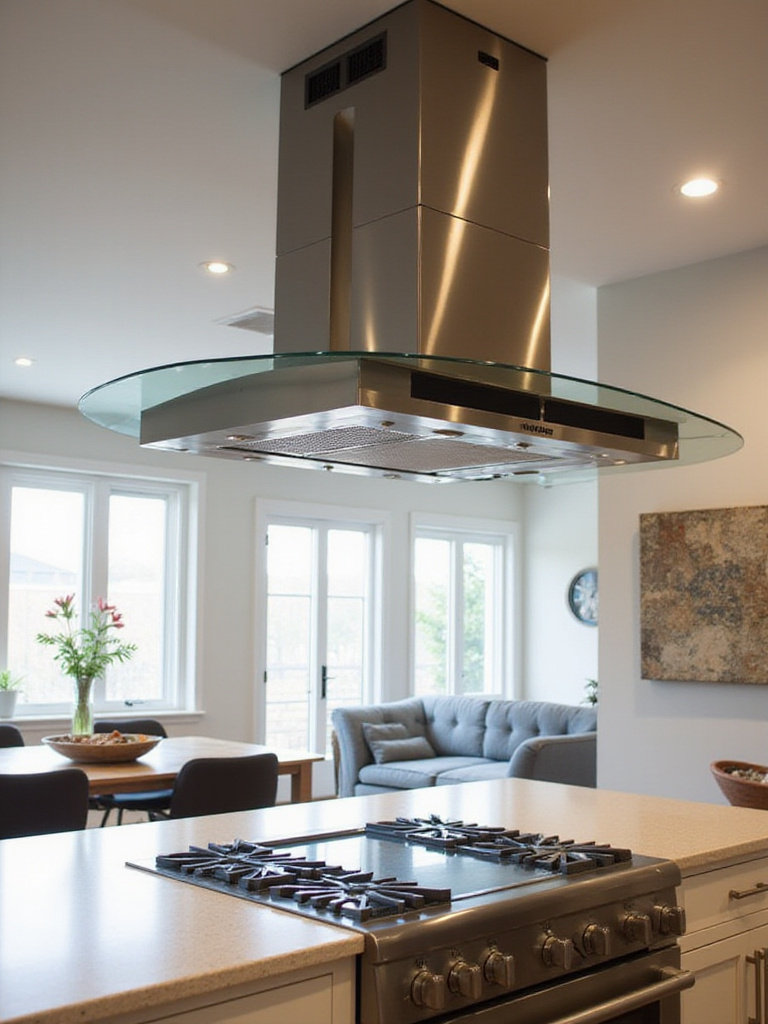
Size the hood to extend at least three inches beyond the cooktop on each side for optimal capture. Plan the shortest, straightest duct run possible to maintain airflow efficiency, using rigid metal ducting rather than flexible alternatives. Consider noise levels, measured in sones, particularly for open-concept kitchens where hood noise affects adjacent living areas.
The environmental story behind this choice began with understanding that proper ventilation significantly improves indoor air quality, removing pollutants that can affect respiratory health and comfort.
Modern kitchens require extensive electrical planning to support small appliances, lighting, and personal devices safely and conveniently. Exceed minimum code requirements by planning outlets based on actual usage patterns. Consider where you use coffee makers, blenders, stand mixers, and other appliances, ensuring each has dedicated access without extension cords.
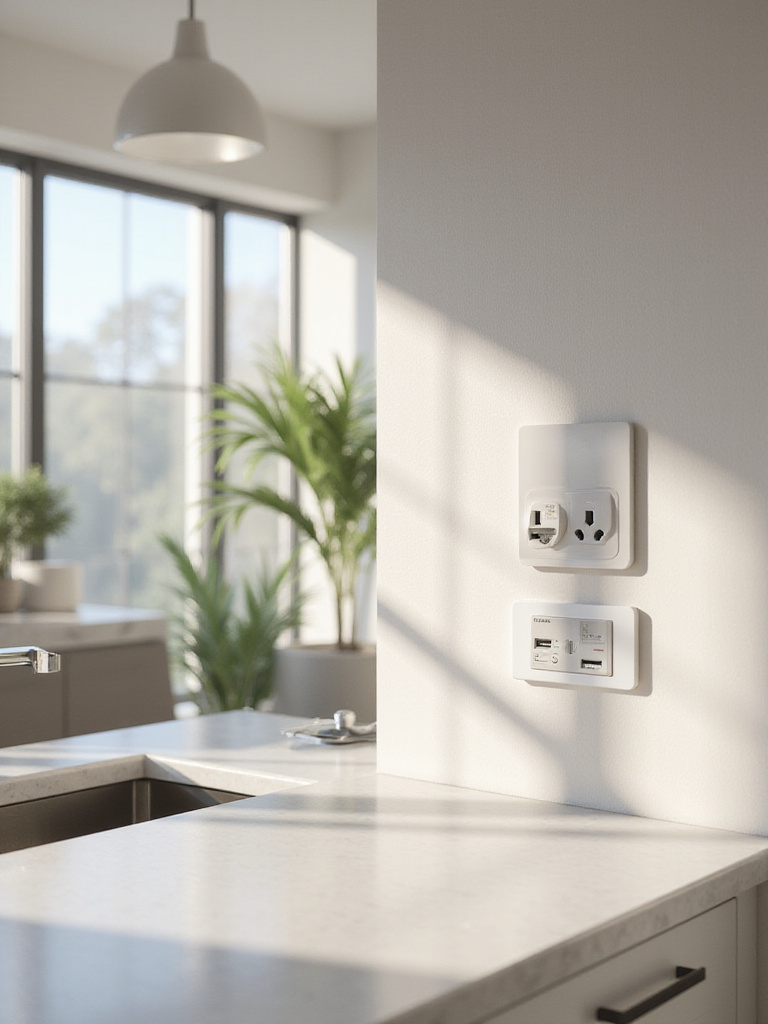
Integrate USB outlets and charging stations in areas where family members naturally gather with devices. Under-cabinet outlets provide clean backsplash lines while maintaining functionality. Plan for future needs by including outlets in pantries for potential appliances and considering pop-up outlets in islands for a streamlined appearance.
The collaboration began with a conversation about how kitchens have evolved into command centers for modern families, requiring electrical infrastructure that supports both culinary and communication needs.
Plumbing constraints significantly impact kitchen remodel design layouts and budgets, making early assessment crucial. Identify existing water supply lines, drain locations, and vent stack positions before finalizing your design. Moving drain lines often represents the most complex and expensive plumbing modification due to gravity requirements and code compliance.
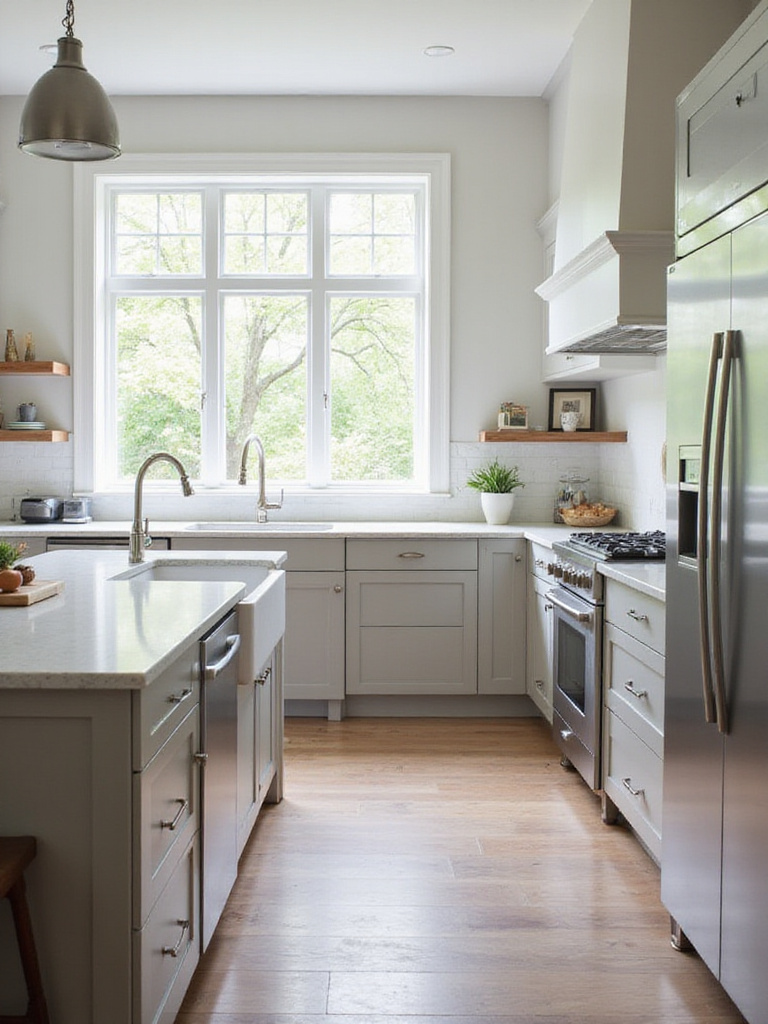
Consult with a licensed plumber early in the design process to understand relocation costs and limitations. Plan new fixtures near existing plumbing when possible to minimize expenses. Consider adding rough-in plumbing for future needs—like ice maker connections or pot fillers—while walls are open, as retrofitting is significantly more expensive.
The sustainable journey of this material involves understanding that thoughtful plumbing planning prevents waste and reduces the environmental impact of extensive modifications during construction.
Smart technology integration in kitchen remodel design should solve specific problems rather than simply adding gadgets. Focus on technologies that genuinely improve daily routines—smart refrigerators with inventory tracking, voice-controlled lighting for hands-free operation, or smart faucets that respond to motion when hands are messy.
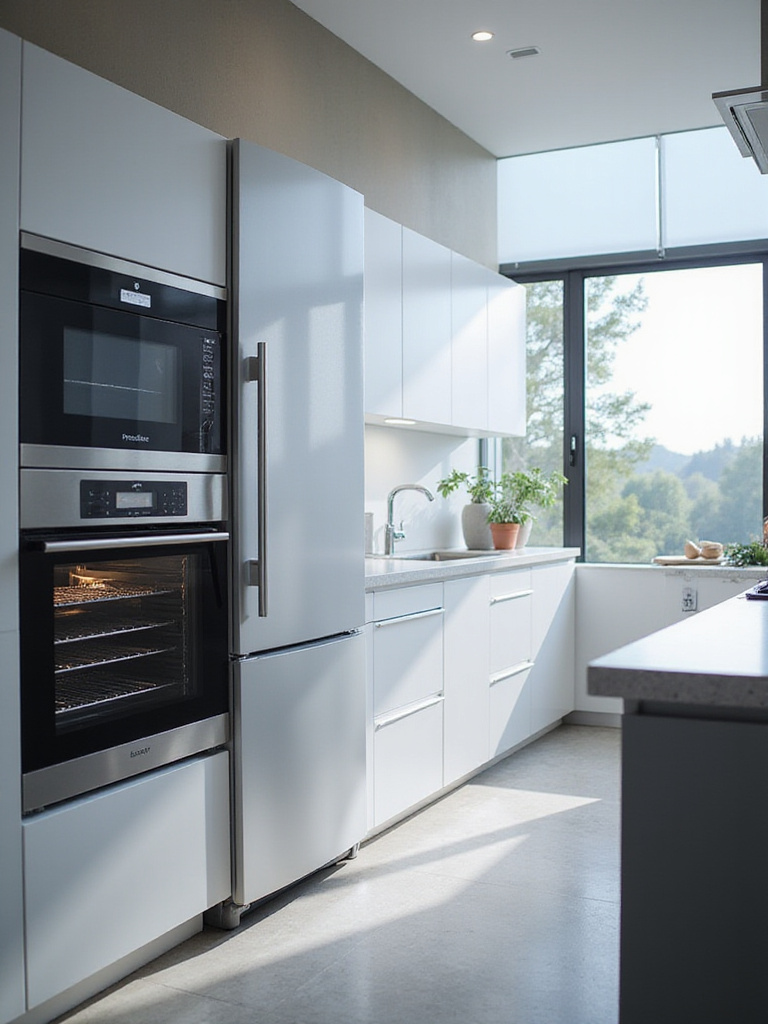
Plan robust Wi-Fi coverage and consider hardwired connections for critical devices. Ensure compatibility between smart devices and choose systems that integrate with your preferred smart home platform. Install adequate electrical infrastructure during construction to support current and future smart appliances without requiring additional electrical work.
The maker’s journey from apprentice to master influenced the understanding that the best smart technology feels intuitive and invisible, enhancing kitchen functionality without adding complexity to daily routines.
Create visual harmony in your kitchen remodel design by establishing a cohesive color palette and materials scheme before selecting individual elements. Gather inspiration images and identify common themes in colors, textures, and styles that resonate with your aesthetic preferences. Use these images as reference points for maintaining consistency across all selections.
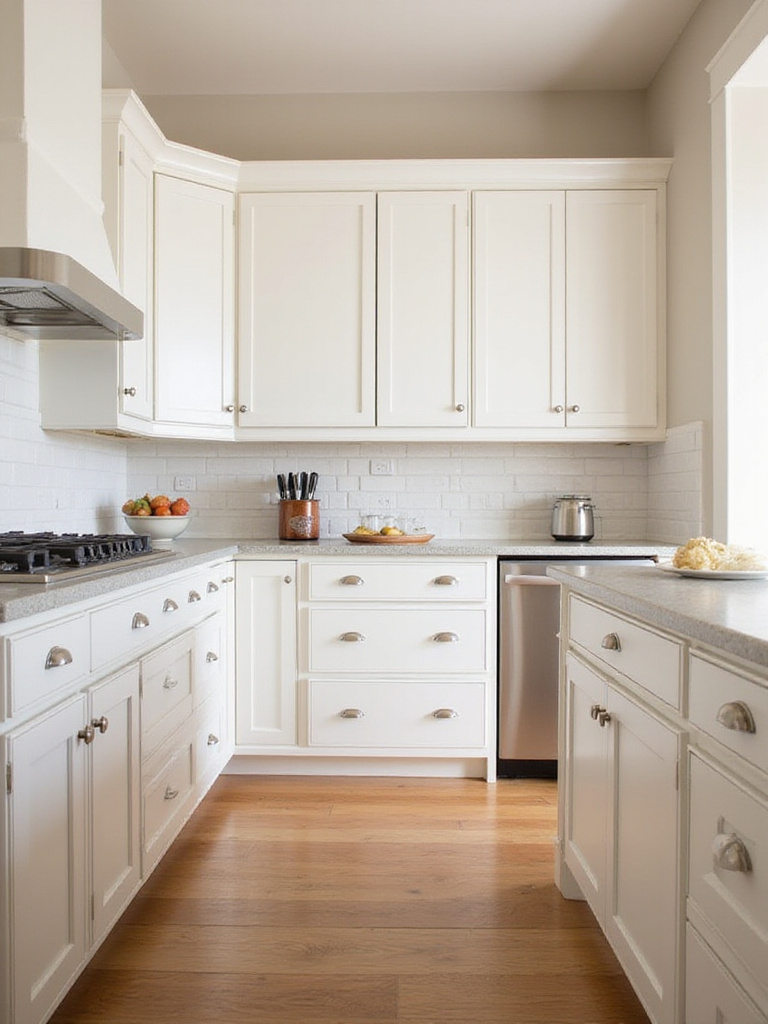
Start with major elements—cabinets, countertops, and flooring—ensuring they complement each other and fit your budget. Build outward to secondary elements like backsplashes, paint colors, and hardware. Create a physical mood board with actual samples to evaluate how materials interact under your kitchen’s specific lighting conditions.
The heritage technique gets a contemporary update through careful balance of warm and cool tones, limiting your primary palette to three or four main colors to avoid visual chaos while maintaining interest through varied textures and finishes.
Integrate waste management systems seamlessly into your kitchen remodel design to maintain aesthetics while supporting efficient daily routines. Assess your household’s typical waste streams—trash, recyclables, and potentially compost—to determine necessary bin capacity and organization. Plan locations near primary prep areas where waste is generated most frequently.
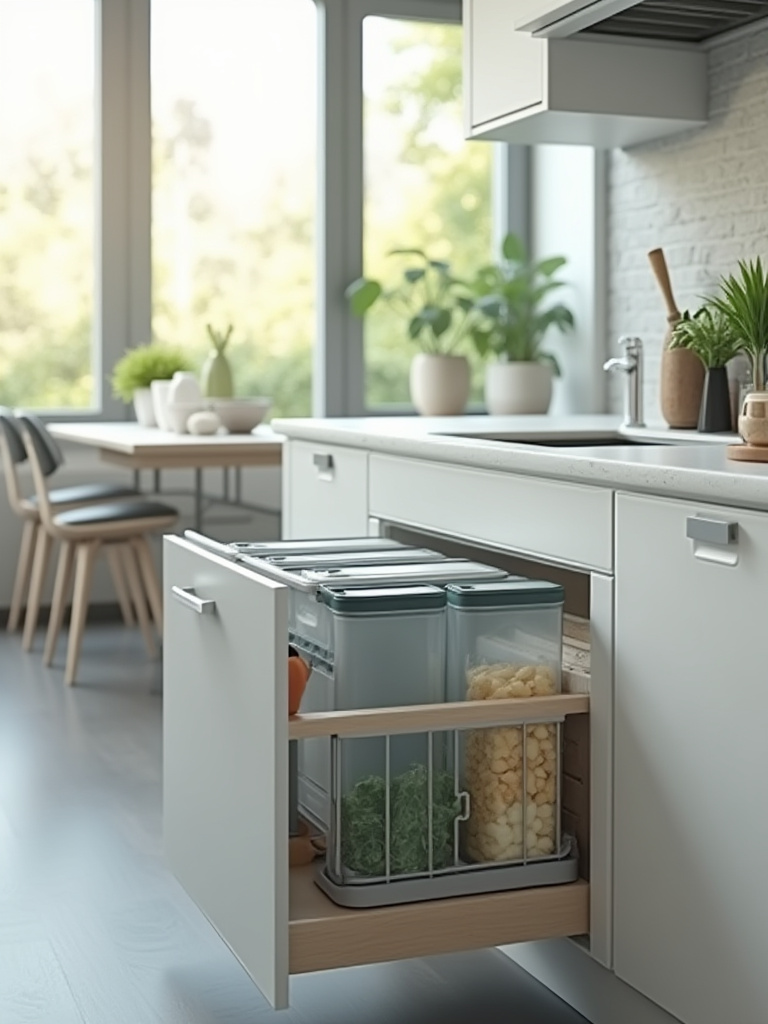
Select pull-out cabinet systems that accommodate multiple waste streams while maintaining easy access. Consider specialized solutions like compost bins with carbon filters for odor control, or recycling stations with separate compartments for different materials. Size cabinet openings and hardware to handle the weight of full bins safely.
Professional stylists approach this by first understanding that effective waste management enhances kitchen functionality and cleanliness, making it easier to maintain the beautiful space you’ve invested in creating.
Design your kitchen remodel with universal accessibility principles that benefit users of all ages and abilities. Plan wider pathways of at least 36 inches between major elements to accommodate mobility aids if needed. Incorporate varied counter heights—including lower sections for seated work and higher areas for specific tasks—to serve different users comfortably.
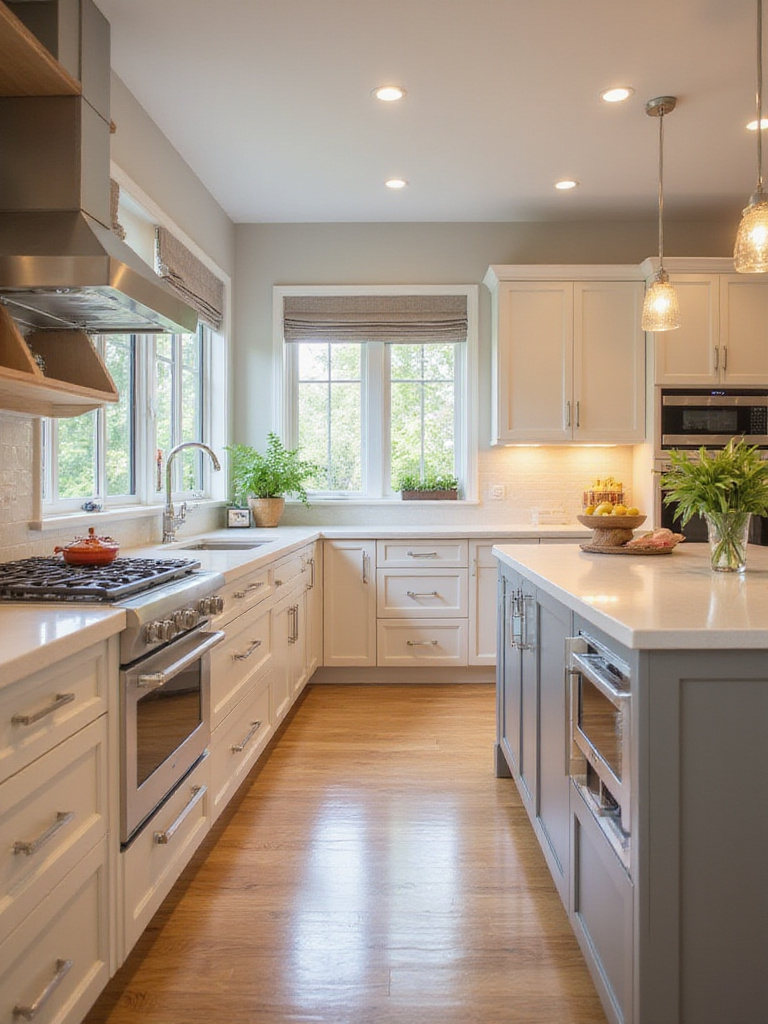
Install pull-out shelves and drawers in base cabinets to minimize bending and reaching. Choose lever-style handles over knobs for easier operation with limited hand strength. Plan enhanced lighting with multiple layers and controls to improve visibility and safety for all users.
The evolution of this trend reflects broader cultural shifts toward creating homes that adapt to changing needs rather than requiring costly modifications later, making universal design a wise long-term investment.
Evaluate whether professional design assistance will benefit your kitchen remodel design based on project complexity, your confidence level, and available time. Complex projects involving structural changes, layout modifications, or unique spatial challenges typically benefit significantly from professional expertise. Simple cosmetic updates might not require design services.
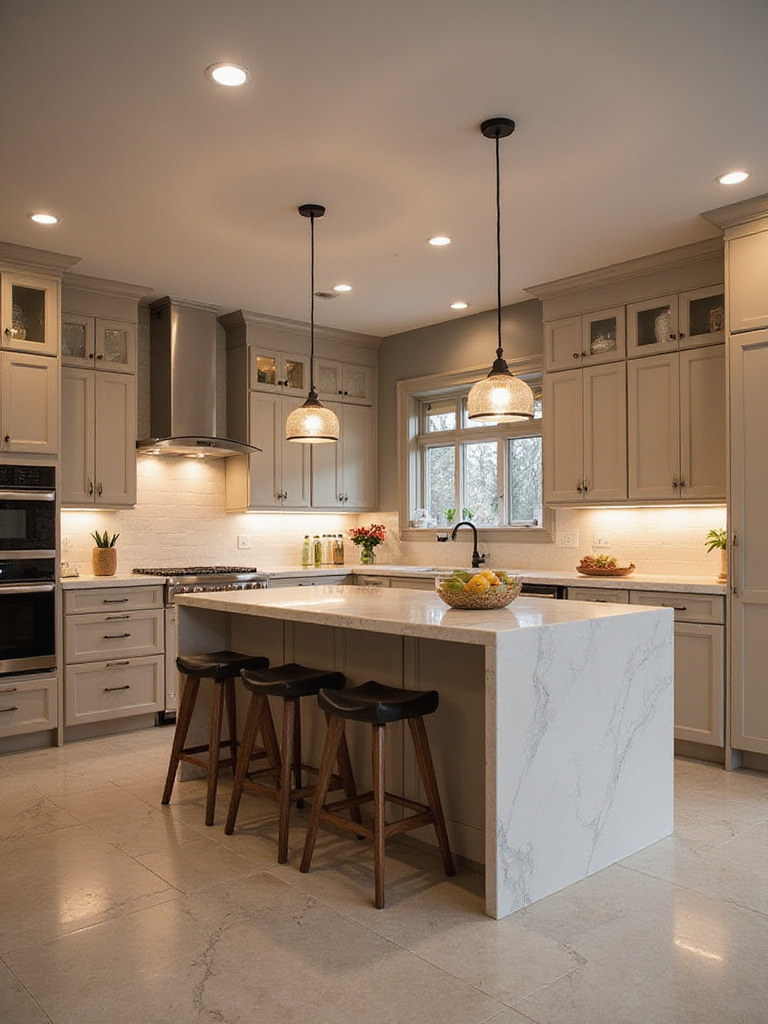
Professional designers bring technical knowledge of building codes, space planning principles, and product specifications that prevent costly mistakes. They also provide access to trade-only products and established relationships with reliable contractors. Consider their fee structure and services scope to determine if the investment aligns with your budget and needs.
The third-generation workshop where this expertise comes to life involves understanding spatial relationships, material properties, and construction sequences that ensure your vision translates successfully into reality.
Building codes and permits protect your investment and ensure safety compliance in your kitchen remodel design. Research local requirements early in the planning process, as permit approval timelines can affect project schedules significantly. Structural changes, electrical modifications, and plumbing relocations typically require permits and inspections.

Submit detailed plans to your local building department and factor review time into your project timeline. Schedule required inspections at appropriate construction phases—rough-in, final, and sometimes intermediate stages depending on work scope. Work with contractors who understand local code requirements and maintain proper licensing and insurance.
The cultural heritage preserved in each piece includes understanding that building codes evolve to incorporate new safety standards and energy efficiency requirements, making compliance essential for both immediate safety and long-term home value.
Your kitchen remodel design journey represents more than aesthetic transformation—it’s an investment in daily comfort, family connection, and home value. These 21 expert insights provide the framework for making informed decisions that balance beauty with functionality, ensuring your new kitchen serves your household’s unique needs while reflecting your personal style.
The most successful kitchen renovations begin with thorough planning and honest assessment of priorities, budget, and lifestyle requirements. Whether you choose to work with professional designers or manage the project yourself, these principles guide you toward solutions that enhance both the immediate cooking experience and long-term satisfaction with your investment.
As morning light filters through your completed kitchen, catching the texture of carefully chosen materials and illuminating the thoughtful organization within every cabinet, you’ll appreciate the wisdom of planning thoroughly and investing in quality solutions that support decades of daily use and cherished memories.